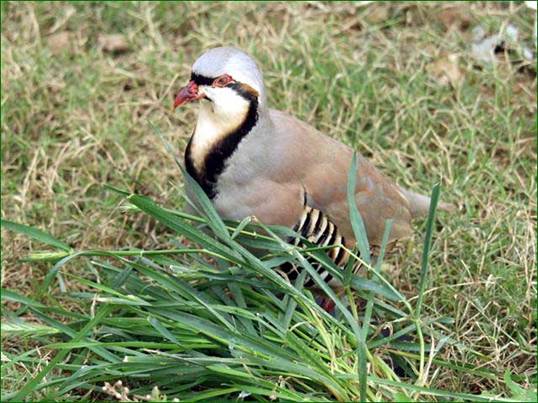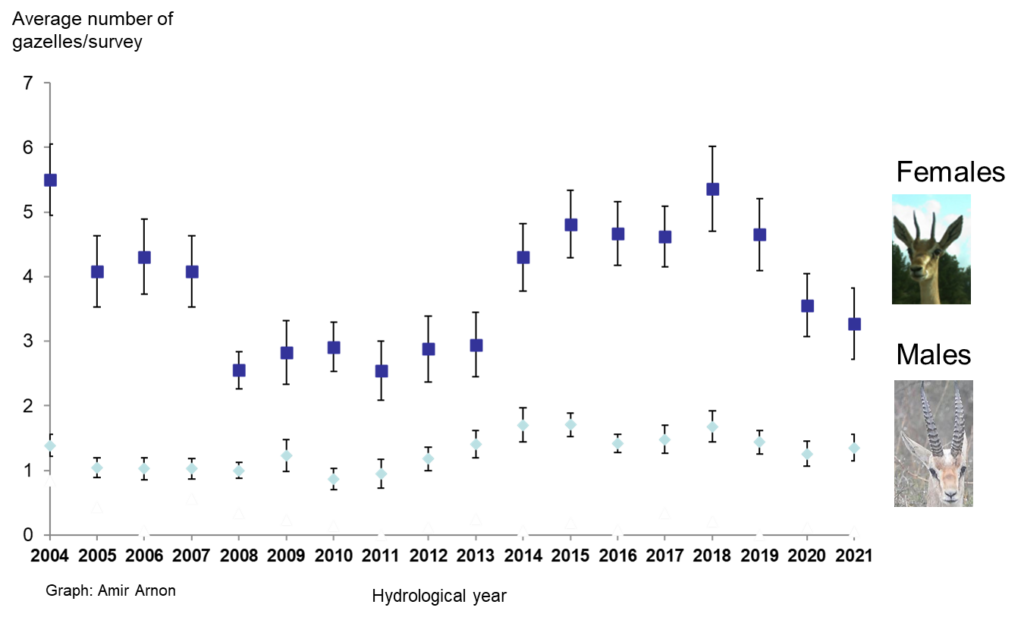Monitoring began in November 2003 as part of a long-term ecological research (LTER) study of a range of selected variables, which was set up and began operating that same year, and has continued until today.
The aim of the survey is to monitor temporal changes in their population size, demography, and ability to produce offspring.
The data are collected throughout the year, using direct observations along a transect on two mornings and two evenings per month.
The transect is 12 km long, covers most of the park’s area and represents the range of factors that may affect population distribution, such as height above sea level, aspect, slope, vegetation type, grazing management, land use, and proximity to roads and built-up areas. The starting point of the survey is rotated. For every observation we record the coordinates, the date and time, the weather conditions, and the sex, age (young/mature) and number of individuals in the group.




